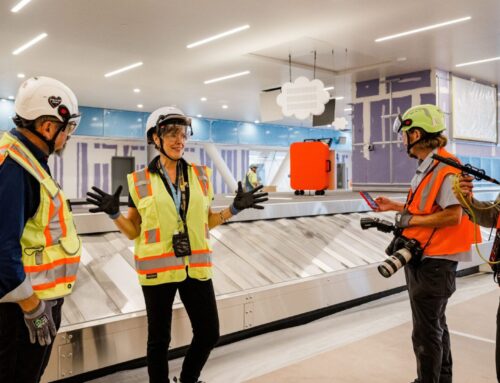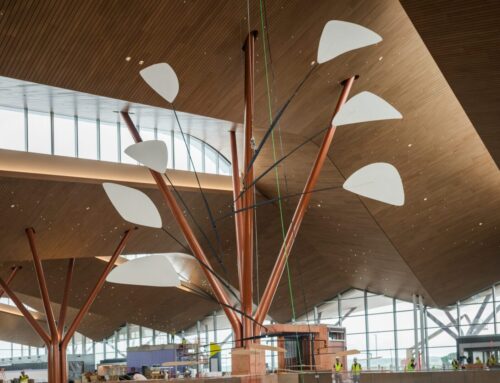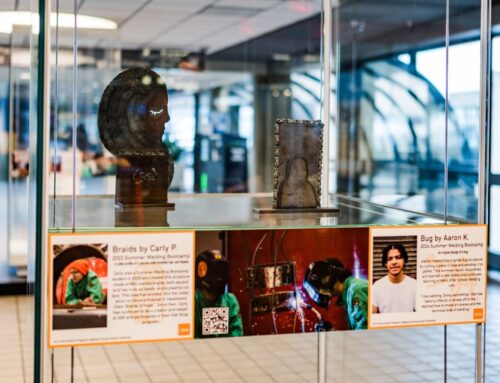Welcome Back, Calder: PIT’s Signature Artwork Relocates to New Terminal
Dating back to 1959, the mobile has been featured at Pittsburgh airports
By Harriet Baskas
Published August 18, 2025
Read Time: 5 mins
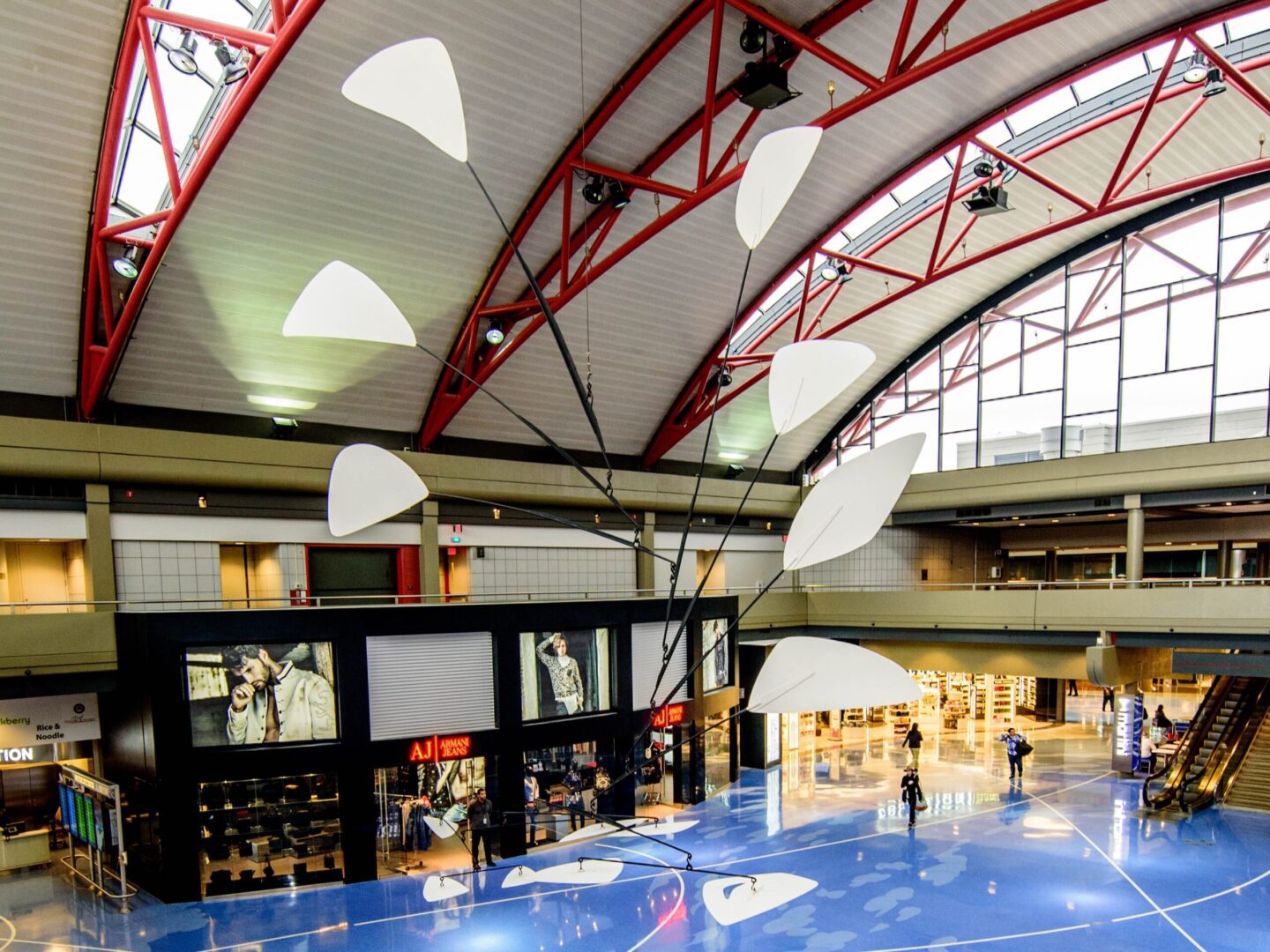
It is black and white, weighs 600 pounds and is 28 feet long and equally wide.
And it will be impossible to miss at Pittsburgh International Airport’s new landside terminal.
“Pittsburgh,” the kinetic mobile by famed artist Alexander Calder that has dangled from ceilings in the region’s airport terminals, on and off, for almost 70 years, is being re-installed this month in the brand-new terminal’s atrium to serve as a both a gently waving welcome and farewell.
First installed in 1959 over the rotunda of the Greater Pittsburgh Airport terminal that opened in 1952, the mobile spent some time at the Carnegie Museum of Art before moving to the current PIT terminal in 1992.
As such, the sculpture has been part of the airport’s art program since before the airport even had the robust art program it has now, said Keny Marshall, PIT’s Manager of Arts and Culture.
“People just expect to see the Calder at the airport,” said Marshall. And while the new landside terminal was not designed around the sculpture, its “place of prominence” was determined in collaboration with the architects – luis vidal + architects in association with Gensler + HDR – to highlight the piece and to give the public a better view of it, he said.
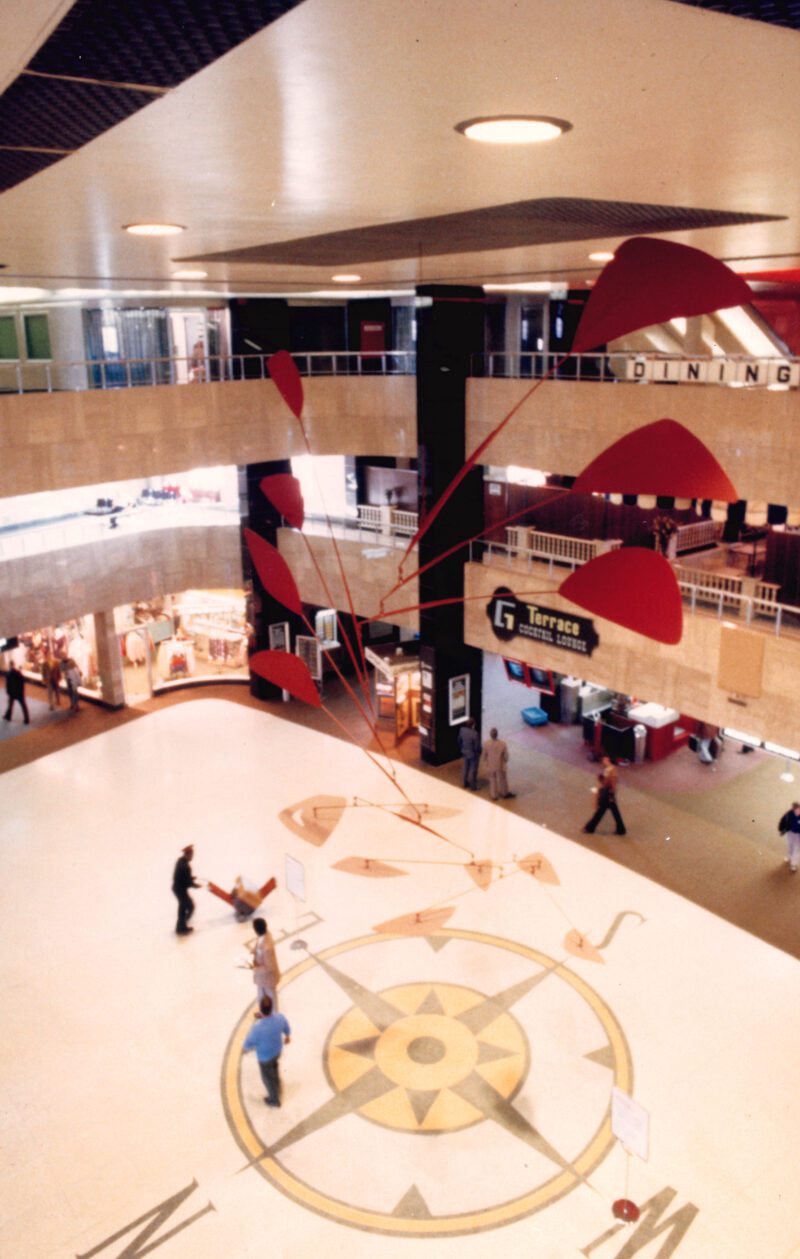
Alexander Calder’s “Pittsburgh” inside the rotunda of the Greater Pittsburgh Airport terminal. (Allegheny County Airport Authority archives)
“Pittsburgh” is made of black steel rods and white aluminum paddles and is balanced so that the elements move with just the slightest breeze to allow the activation of the mobile. The piece has been in storage for the past two years in preparation for its move to the new terminal.
In its previous location above PIT’s post-security Airside Center Core, the Calder mobile was in “an architecturally cluttered space” where few passengers stopped to take time to look at it, said Alex Taylor, an associate professor in the Department of History of Art and Architecture at the University of Pittsburgh who has studied Calder’s work extensively.
“When I’d go the airport, I would stop with my carry-on to watch the work for as many minutes as I could spare before I had to get to the gate,” said Taylor, “But it always felt like I was the only one.”
Carol Brown would also make sure to visit the Calder during her trips through the terminal. The former county parks director was instrumental in getting the sculpture restored back when it was hung incorrectly at the old terminal with its metal sections painted first yellow and green (Allegheny County’s colors) and then pink. Once it was restored, Brown advocated to have it put in the then-new 1992 terminal.
“I would always stop to say ‘Hi, Calder,’ when I went through the terminal. And I am looking forward to being able to say that again in the new terminal,” said Brown.
That will be easy to do. In the new landside terminal, the mobile will hang in the large open atrium with an overlook offering multiple viewing angles, said Marshall.
Experts from Ohio-based McKay Lodge Art Conservation Laboratory, the company that took the Calder down from its previous spot and packed it for storage, will be on hand to unpack the sculpture and put it back up.
It will be an unusual challenge. A special lift is needed to attach the sculpture to the new terminal’s high ceiling, which is almost 80 feet high. Luckily PIT owns a special piece of machinery – the Teupen Leo 26 aerial lift – that can easily handle the task, said Renee Piechocki, a longtime public art consultant for PIT.
And because each piece of the sculpture is carefully cantilevered off the next, “as soon as you add a piece, everything changes. Only once the sculpture is fully assembled does it gracefully balance in the space,” said Marshall.
Once installed, passengers and the public will be able to see the sculpture from eye level or above on the pre-security departure level of the new terminal. On the arrivals level, one floor below, people will be able to look up at the sculpture and walk beneath it, explained Marshall.
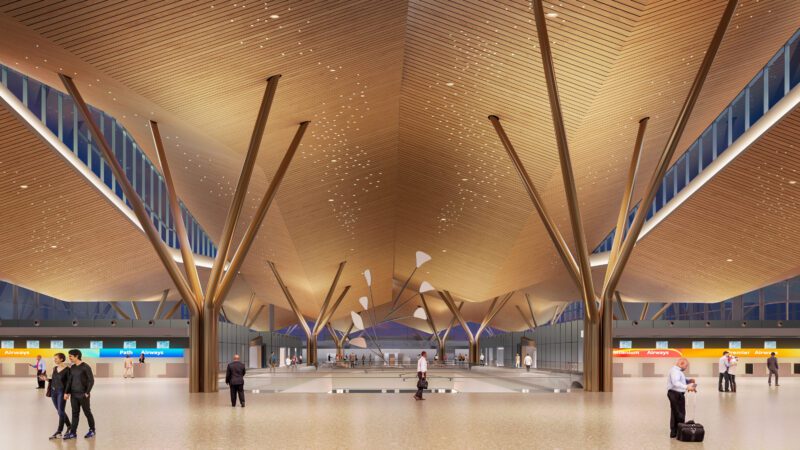
Passengers and the public will be able to see the sculpture at eye level from the pre-security departure level or by looking up from the arrivals level of the new terminal. (Renderings courtesy of Gensler + HDR in association with luis vidal + architects)
There are other airports that have, or once had, Calder mobiles.
Among them are artist’s 45-foot-long mobile titled “.125” that currently hangs in the Departure Hall of Terminal 4 at John F. Kennedy International Airport.
A Calder mobile named “Brass in the Sky,” once hung in Marshall Field & Co.’s Cloud Room Restaurant at Chicago’s Midway Airport.
And a 40-foot-wide Calder work titled ‘Red, Black and Blue” made its way from Dallas Love Field (DAL) to Dallas-Fort Worth International Airport (DFW) and to Milwaukee Mitchell International Airport (MKE) before finally landing at the Milwaukee Art Museum.
Valued now at about $12 million, PIT’s Calder mobile may be the airport’s most valuable and well-known work in a growing art collection.
“But you don’t need an art degree to understand why it is the centerpiece of the new terminal,” said Piechocki.
Like the muti-tiered sculpture, Piechocki imagines there will be multiple layers of responses to the mobile in its new space.
For those already familiar with the sculpture from the existing terminal, she hopes the reaction is “Wow, they finally gave the Calder the place it deserved. It looks amazing.”
For someone who has never been to Pittsburgh and who knows art, the reaction might be, “Oh my gosh! Is that a Calder?”
And for someone who is just a little grumpy and stressed out at the airport who might not know anything about art? Piechocki hopes they might pass by the sculpture and “be subconsciously a little less stressed out because they’re looking at a beautiful thing moving through the air.”

